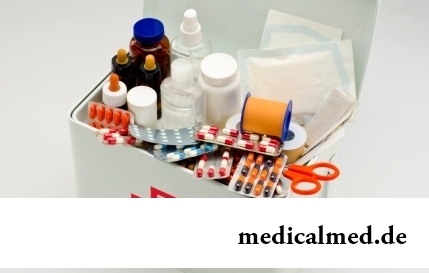





Promedolum
Application instruction:
Promedolum – narcotic analgetic drug.
Form of release and structure
- Tablets: ploskotsilindrichesky, white color, with a facet and a stamping in the form of a letter "P" (on 10 таб. in blister strip packagings, 1 or 2 packagings in a cardboard pack);
- Solution for injections of 1% and 2%: transparent, colourless (for drugstores – on 1 ml in the syringe tubes, in a pack of cardboard 20, 50 or 100 syringes; on 1 ml in ampoules, on 5 ampoules in a blister strip packaging, in a pack cardboard 1 or 2 packagings (if it is necessary, with an ampoule knife or the scarificator); for medical institutions – on 1 ml in ampoules, on 5 ampoules in a blister strip packaging, in a box cardboard or a box from corrugated fibreboard 20, 30, 40, 50 or 100 of packagings (if it is necessary, with an ampoule knife or the scarificator)).
Active agent: Trimeperidini hydrochloridum (Promedolum):
- 1 tablet – 25 mg;
- 1 ml of solution – 10 or 20 mg.
Excipients of tablets: potato starch, sugar, stearic acid.
Additional components of solution: Acidum hydrochloricum, water for injections.
Indications to use
Tablets and solution appoint Promedolum at a pain syndrome of average and strong degree of manifestation, resistant to non-narcotic analgesics, including in the following cases:
- Injuries;
- Burns;
- Lumbosacral radiculitis;
- Acute neuritis;
- Thalamic syndrome;
- Protrusion of an intervertebral disk;
- Postoperative period;
- Acute prostatitis;
- Peptic ulcer of a stomach and 12-perstny gut;
- The pains caused by a spasm of smooth muscles of internals: renal, hepatic, intestinal gripes (in combination with atropinopodobny and antispasmodics);
- Chronic pancreatitis;
- Oncological diseases.
In the form of solution drug is appointed, besides, at the following diseases / states:
- Myocardial infarction;
- The stratifying aortic aneurysm;
- Unstable stenocardia;
- Thromboembolism of arteries of extremities or pulmonary artery;
- Thrombosis of a renal artery;
- Lung heart attack;
- Acute pericardis;
- Air embolism;
- Acute pleurisy;
- Kauzalgiya;
- Bad attack of glaucoma;
- Acute vesiculitis;
- Paranephritis;
- Perforation of a gullet;
- Spontaneous pheumothorax;
- Acute dysuria;
- Priapism;
- Paraphimosis;
- Foreign bodys of an urethra, bladder, rectum;
- Fluid lungs;
- Acute left ventricular failure;
- Cardiogenic shock;
- Preoperative, operational and postoperative periods;
- Childbirth (for anesthesia and stimulation);
- Neuroleptanalgesia (in a combination with neuroleptics).
Contraindications
For both dosage forms:
- Oppression of a respiratory center;
- Hypersensitivity to any of drug components.
In addition for tablets:
- Cachexia;
- Children's age (because of impossibility of exact dosing).
In addition for solution:
- Infectious diseases (because of risk of penetration of an infection into the central nervous system);
- Toxic dyspepsia (delay of removal of toxins and the aggravation connected with it and prolongation of diarrhea);
- Diarrhea owing to the pseudomembranous colitis caused by use of cephalosporins, linkozamid or penicillin;
- Blood coagulation disturbance, including owing to performing anticoagulating therapy (for epidural and spinal anesthesia);
- Simultaneous use of monoamine oxidase inhibitors and within 21 days after their cancellation;
- Children's age up to 2 years.
Tablets with care should be applied:
- Hypothyroidism;
- Craniocereberal injury with psychosis;
- Oppression of the central nervous system;
- Myxedema;
- Respiratory insufficiency;
- Urethra stricture;
- Prostate hyperplasia;
- Adrenal insufficiency;
- Liver/renal failure;
- Alcoholism;
- Advanced age.
Solution with care should be applied:
- The expressed inflammatory diseases of intestines;
- Suicide bent;
- Spasms;
- Emotional lability;
- Craniocereberal injury;
- Oppression of the central nervous system;
- Intracranial hypertensia;
- Alcoholism;
- Drug addiction (in the anamnesis including);
- Arterial hypotonia;
- Arrhythmia;
- Chronic obstructive pulmonary disease;
- Bronchial asthma;
- Cachexia;
- Surgical interventions on digestive tract or an urinary system;
- Urethra stricture;
- Prostate hyperplasia;
- Myxedema;
- Adrenal insufficiency;
- Respiratory insufficiency;
- Chronic heart failure;
- Liver/renal failure;
- Hypothyroidism;
- The weakened condition of patients;
- Children's age;
- Advanced age;
- Period of pregnancy and lactation.
Route of administration and dosage
In the tablets Promedolum it is necessary to accept inside 1-2 pieces. At pains owing to a spasm of smooth muscles (intestinal, renal and hepatic colic) drug is combined with spasmolytic and atropinopodobny means, treatment is carried out under careful control of the patient. The most admissible single dose – 50 mg (2 таб.), daily – 200 mg (8 таб.).
Solution Promedolum is entered intravenously (in/in) and intramusculary (in oil), into the syringe tubes – only intramusculary and subcutaneously (п / to).
The adult depending on a clinical situation appoint 10-40 mg (from 1 ml of 1% of solution to 2 ml of 2% of solution). To children of 2 years depending on age – on 3-10 mg.
For premedication before an anesthesia the drug is administered п / to or in oil 20-30 mg in a dose along with 0,5 mg of atropine in 30-45 minutes prior to operation.
During an anesthesia Promedolum is entered in/in fractional doses on 3-10 mg.
For a labor pain relief appoint in oil or п / to in a dose of 20-40 mg at disclosure of a pharynx to 3-4 cm and satisfactory condition of a fruit. In order to avoid a narcotic depression of a fruit and the newborn the last dose has to be entered not later than in 30-60 minutes prior to delivery.
The maximum single dose for adults – 40 mg, daily – 160 mg.
Side effects
At reception of Promedolum in tablets are possible:
- From a nervous system: oppression of a respiratory center, asthma, disorientation, block, headache, euphoria, delay of speed of psychomotor reactions;
- From digestive tract: nausea and vomiting;
- Others: the increased sweating, a lowering of arterial pressure, allergic reactions, medicinal dependence, accustoming.
At use of drug in the form of solution are possible:
- From the alimentary system: more often – nausea, vomiting, a lock; less often – irritation of digestive tract, anorexia, dryness of a mucous membrane of an oral cavity, a spasm of biliary tract; seldom (at inflammatory diseases of intestines) – paralytic intestinal impassability, toxic megacolon (spasms in a stomach, nausea, vomiting, a meteorism, a lock, a gastralgia); frequency is unknown – a hepatotoxic (a pale chair, dark urine, an ikterichnost of integuments and scleras);
- From a nervous system and sense bodys: more often – drowsiness, вертиго, weakness; less often – an illegibility of visual perception, a headache, a diplopia, an uneasy dream, unusual dreams, nightmares, nervousness, discomfort, fatigue, involuntary muscular twitchings, a tremor, spasms, confusion of consciousness, euphoria; seldom – the depression, hallucinations, at children is concern, paradoxical excitement; frequency is unknown – a disorientation, delay of speed of psychomotor reactions, a ring in ears, muscle tension (especially respiratory), spasms;
- From cardiovascular system: more often – a lowering of arterial pressure (ABP); less often – arrhythmias; frequency is unknown – increase in the ABP;
- From an urinary system: less often – a spasm of ureters (frequent desires to an urination, pain and difficulty at an urination), decrease in a diuresis;
- From respiratory system: less often – oppression of a respiratory center;
- Allergic reactions: less often – a Quincke's disease, a laryngospasm, a bronchospasm; seldom – a skin itch, rash, a face edema;
- Local reactions: burning, a hyperemia and hypostasis in the place of an injection;
- Others: less often – the strengthened sweating; frequency is unknown – medicinal dependence, accustoming.
Special instructions
During treatment it is forbidden to take alcoholic beverages, it is necessary to refrain from driving and performance of potentially dangerous types of the works demanding the speed of reactions and high concentration of attention.
Medicinal interaction
Promedolum strengthens the respiratory depression and the central nervous system caused by use of ethanol, means for the general anesthesia, monoamine oxidase inhibitors, hypnotic drugs and sedative drugs, anxiolytics, neuroleptics, muscle relaxants and other narcotic analgetics.
The barbiturates (especially phenobarbital) applied systematically can reduce analgeziruyushchy action of Promedolum.
Naloxonum eliminates the analgesia caused by trimeperidine, recovers breath and reduces oppression of the central nervous system.
Nalorfinum eliminates the breath depression caused by drug, keeping its analgeziruyushchy effect.
Trimeperidine reduces action of Metoclopramidum, strengthens hypotensive effect of anti-hypertensive drugs, including diuretics and ganglioblokator.
In case of simultaneous use antidiarrheal means (including loperamide) and drugs with anticholinergic activity increase risk of an ischuria and emergence of a lock, up to intestinal impassability.
Promedolum strengthens effect of anticoagulants therefore in need of use of this combination it is necessary to control a plasma prothrombin.
Buprenorphine (including if it was applied during the previous therapy) reduces effect of trimeperidine.
Because of overexcitation or braking of the central nervous system at simultaneous use of monoamine oxidase inhibitors the risk of development of heavy reactions with emergence hypo - or hypertensive crises increases.
At the same time applied naltrexone reduces efficiency of Promedolum, can accelerate emergence of symptoms of a withdrawal in patients with drug addiction (these signs can appear already 5 minutes later after administration of drug, remain within 48 hours and are characterized by difficulty of their elimination).
Terms and storage conditions
To store in dry (tablets), protected from light, the place, unavailable to children, tablets – at the room temperature, solution – at a temperature up to 15 ºС.
Period of validity of tablets and solution in ampoules – 5 years, solution in the syringe tubes – 3 years.
Our kidneys are capable to clear three liters of blood in one minute.

Sooner or later hair turn gray at all. Many people try to hide these changes, returning natural color of the hair with the help about...
Section: Articles about health
The way of life of people promptly changes from year to year: if about ten years ago the personal computer was not in each family, then today already very few people do without this device. Certainly, and children master the computer at full speed: they not only I play...
Section: Articles about health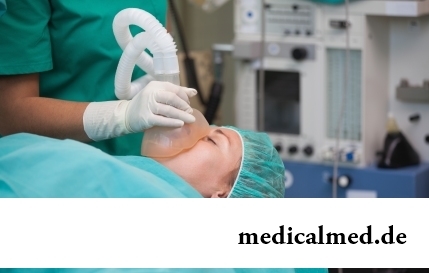
History of use of an anesthesia during operations contains more than 160 years. Annually in the world hundreds of thousands of surgical interventions during which to patients the substances immersing them in a dream and saving from pain are entered are carried out. Using an anesthesia many myths and delusions are still connected. It is worth getting acquainted with the most widespread of them....
Section: Articles about health
Among a set of the perfumery and cosmetic goods which are released today the special group is made by the means containing anti-bacterial...
Section: Articles about health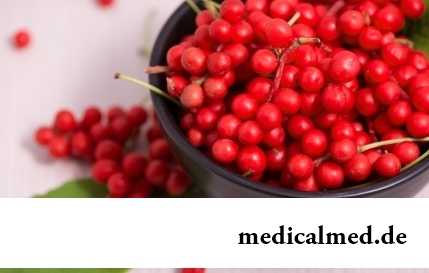
Statistically, pathologies of a thyroid gland in the world more than 500 million people have. Failures in work of this body lead to heavy disbolism, development of heart diseases, vessels, a reproductive and nervous system. In hard cases excessive...
Section: Articles about health
Such trouble as the milkwoman's attack, at least once in life happened almost to each woman. Prevalence of a disease is explained by the fact that the causative agent of an illness belongs to the so-called opportunistic microflora living on mucous membranes of any human body and which is becoming more active only under favorable conditions. If you had curdled allocations from a vagina, the itch and burning in external genitals, or painful feelings disturb at sex...
Section: Articles about health
Any of us is not insured from a heavy illness of the loved one. Happens and so that someone from family members becomes lying бо...
Section: Articles about health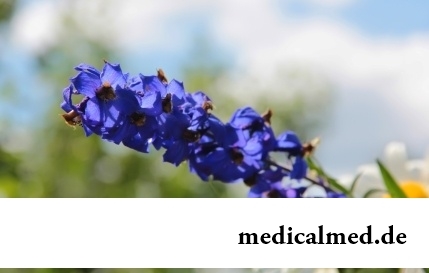
It is impossible to imagine human life in which there would be no plants. Practically in each apartment and any production room there are window plants, millions of people with pleasure are engaged in gardening and truck farming, many citizens пр...
Section: Articles about health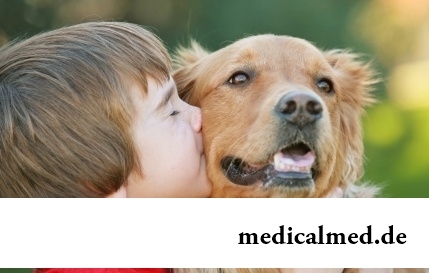
Is told about advantage of domestic animals for development of the child much. But many parents nevertheless do not hurry to bring pets as are afraid that they can do harm to health of children. What troubles can really trap kids and how to make joint life of a family and domestic animals comfortable and safe?...
Section: Articles about health
The body of the person almost for 60% consists of water. It is so important for normal functioning of an organism that loss of all is ponut...
Section: Articles about health
For many spouses the question of planning of a family is one of the main. The problem of the choice of effective and safe contraceptives at the same time comes out on top. Russians still not often resort to operation of a vasectomy extremely popular in the USA...
Section: Articles about health
Feeding by a breast - the integral part of ideal motherhood allowing to come into contact with the kid and to create to it healthy immunity since early years. Nevertheless, this important process in life of mother and child can be saddened laktostazy − by a milk delay in a mammary gland. What main reasons for a laktostaz? How not to allow problems with breastfeeding? Let's consider 10 premises resulting in stagnation of milk at the nursing mother....
Section: Articles about health
Quite large number of people adheres to the principles of vegetarian food. But how to be if in a family of vegetarians is д...
Section: Articles about health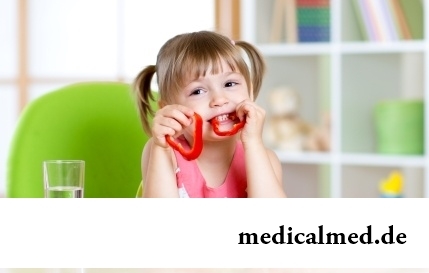
Reactive pancreatitis - the disease which is characterized by inflammatory process in a pancreas which arises most often because of excess activity of digestive enzymes. It − the emergency state which treatment has to take place in хирургич...
Section: Articles about health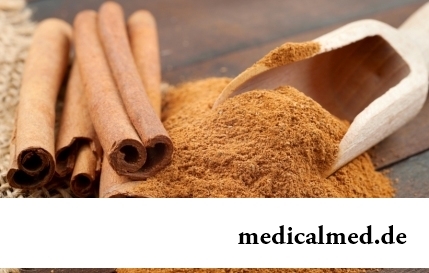
Ayurveda - the most ancient tselitelsky practice which came to us from India. It represents the doctrine about maintenance of physical, psychological and moral health of the person by means of the complex of procedures including a diet, cleaning of an organism, breathing exercises, massage, and in case of a disease - and medicinal therapy. The healers practicing Ayurveda assign very important part to spices, and at the heart of Ayurvedic drugs, as a rule, there are they. It is considered that spices not of t...
Section: Articles about health
Almost each of us during life faced dissatisfaction with own body. At such moments, as a rule, we beginning...
Section: Articles about health
Women quite often suffer from complexes concerning the sizes of the bust. Strangely enough, not too modest, and excessively curvy shapes become the reason of sincere discomfort sometimes. Except psychological problems, a big bust sometimes with...
Section: Articles about health
Cold, puffiness of a nose, itch, the watering eyes - characteristic symptoms of the allergic rhinitis resulting from hit of allergens (pollen, house dust, hair of animals, etc.) on a mucous membrane of a nose. Unpleasant feelings often give trouble, serving as the reason of a headache, an acrimony, sleep disorders, and in certain cases and the states close to a depression. How to get rid of undesirable satellites of a disease if near at hand there are no antiallergic...
Section: Articles about health
The state of health of the person in many respects depends on food. The organism will well function if during food it are...
Section: Articles about health
For the city dweller the fitness is the most convenient sport. It is enough to acquire the subscription to the gym to get access to various apparatuses and an opportunity to train under the leadership of the experienced consultant. Many consider fitness on...
Section: Articles about health
All the known slogan "Protect Men!" arose not from scratch. In a sense, the nature created men much less adapted for vital disorders, than it seems at first sight. Statistically, men are ill more often, than women, have the majority of illnesses heavier and earlier die. The situation is aggravated with the fact that our fathers, husbands, brothers and sons are not always inclined to care for the health. Partly it happens because of unwillingness of t...
Section: Articles about health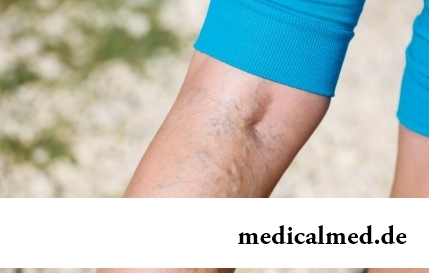
The varicosity has familiarly many, statistically, this disease more than a half of all adult population. As...
Section: Articles about health
All are familiar with cold, and practically everyone believes that he has sufficient knowledge and experience that correctly to treat it. In practice most of people makes mistakes in attempts to get rid of rhinitis, and divides numerous delusions it....
Section: Articles about health
One of the major chemical processes happening in a human body are oxidation reactions. They go with participation of fats and carbohydrates which we receive from food, and the oxygen getting to us from air. A main goal of such reactions is obtaining the energy necessary for life activity. Unfortunately, as a result of these processes dangerous by-products – so-called free radicals are allocated. To minimize harm which they can cause to the person neo...
Section: Articles about health
Healthy lifestyle today in fashion, and many parents think of that the child from the early childhood played sports. To a Torah...
Section: Articles about health
Within several decades of our compatriots convinced that the use of butter nasty affects a condition of coronary vessels. As a result the reputation of a product was impaired thoroughly a little, and many almost ceased to include...
Section: Articles about health
New year, wedding, birthday, office party – an occasion to drink at the Russian person will always be. How to reduce a negative impact of alcohol by an organism and to avoid a condition of strong intoxication? The most correct council – to refuse the use of alcoholic drinks. Council is true, but not always feasible. We offer several advice which will help you in cases when it is impossible to avoid alcohol intake....
Section: Articles about health
